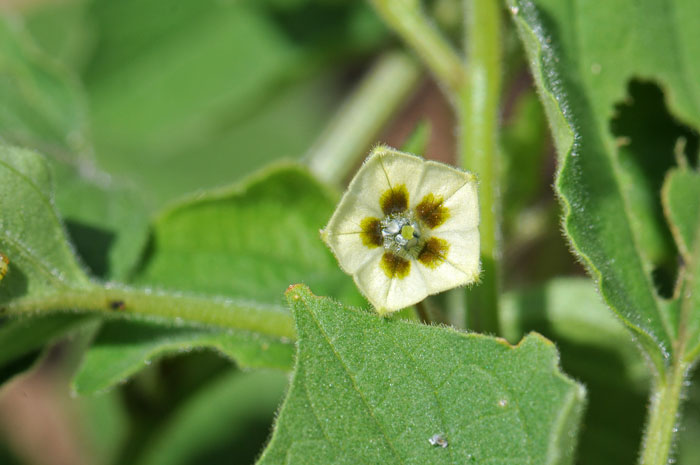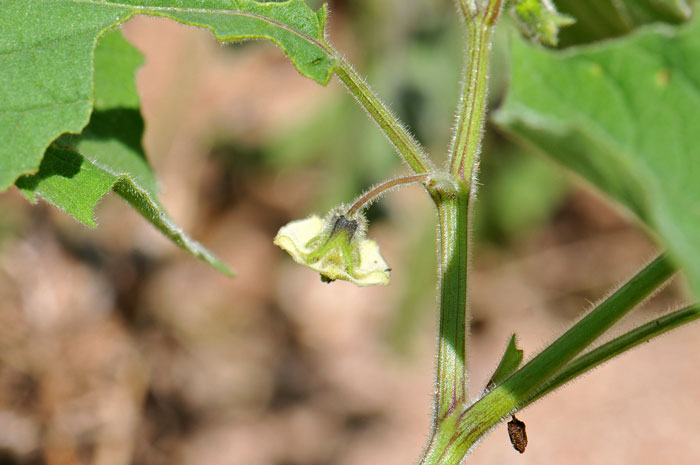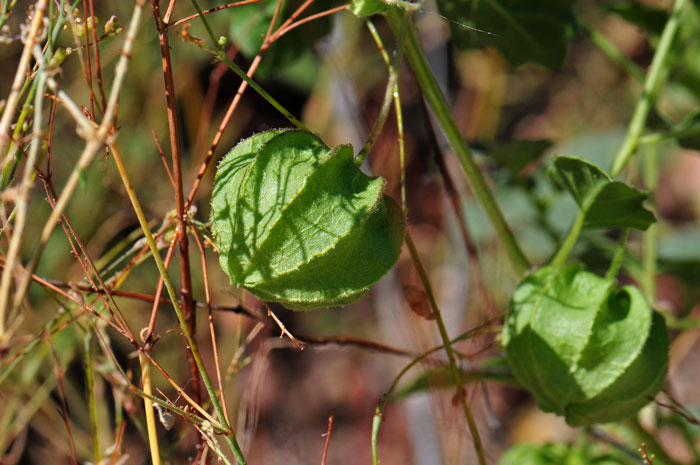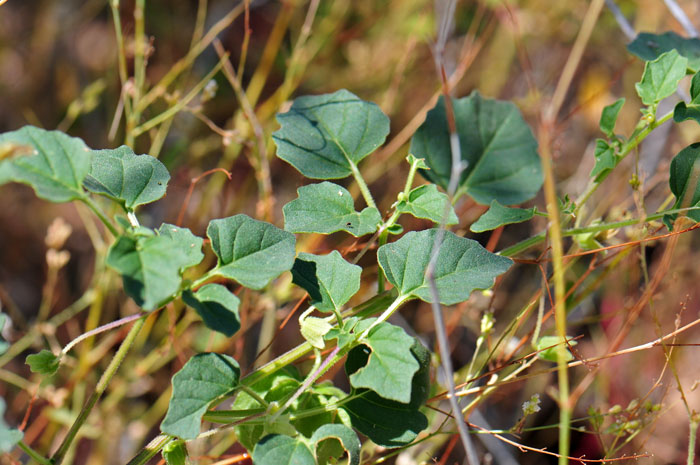Physalis pubescens, Husk Tomato




Scientific Name: Physalis pubescens
Common Name: Husk Tomato,
Also Called: Ground Cherry, Groundcherry, Husk-tomato (Spanish: Capulí, Muyaca, Tomatillo)
Family: Solanaceae, Nightshade or Potato Family
Synonyms: (Physalis hylophila)
Status: Native
Duration: Annual
Size: Up to about 30 inches more or less.
Growth Form: Forb/herb; plants with small glands; plants spreading.
Leaves: Green; large, up to 3½ inches or more; margins entire to coarsely toothed.
Flower Color: Yellow, pale yellow, 5 dark spots inside floral tube; floral tube widely bell-shaped to flattish, inflorescence a short pedicel; calyx greatly enlarged as fruit matures.
Flowering Season: August to September.
Elevation: 3,000 to 6,000 feet; below 4,500 feet in California.
Habitat Preferences: Mostly along streams in partial shade; waste places and cultivated fields in California.
Recorded Range: Physalis pubescens is found across most of the United States. This species is an invasive weed in eastern Canada. It is also native to Baja California and throughout most of Mexico. In Arizona it is found in southern part of the state and in Maricopa and Greenlee counties.
North America & US County Distribution Map for Physalis pubescens.
U.S. Weed Information: No information available.
Invasive/Noxious Weed Information: No information available.
Wetland Indicator: In North America Physalis pubescens has the following wetland designations: Arid West, FACU; Atlantic and Gulf Coastal Plain, UPL; Eastern Mountains and Piedmont, FACU; Great Plains, FACU; Midwest, UPL; Northcentral & Northeast, UPL; Western Mountains, Valleys, and Coast, FACU.
FACU = Facultative Upland, usually occur in non-wetlands, but may occur in wetlands
UPL = Obligate Upland, almost never occur in wetlands.
Threatened/Endangered Information: No information available.
In the Southwestern United States, Arizona, California and New Mexico each have 12 species of Physalis, Nevada has 4 species, Texas has 18 species and Utah has 7 species. All data is approximate and subject to taxonomic changes.
There are 2 varieties in Physalis pubescens;
Physalis pubescens var. integrifolia, Husk Tomato (see Recorded Range above);
Physalis pubescens var. pubescens, Husk Tomato (mostly the eastern ½ of the U.S. and TX; eastern Canada).
Comments: In Southwest Desert Flora please also see; Sharpleaf Groundcherry, Physalis acutifolia, Yellow Nightshade Groundcherry, Physalis crassifolia and Ivyleaf Tomato, Physalis hederifolia.
Physalis pubescens has been used for food by southwestern indigenous peoples.
Mohave Food, Fruit, Fruits eaten fresh by children.
Navajo Food, Fruit, Sour berries mixed with honey and eaten.
Navajo, Ramah Drug, Panacea, Dried leaves and root used as 'life medicine.'
Navajo, Ramah Food, Fruit, Fruit eaten raw or boiled.
See ethno-botanical uses at Native American Ethnobotany, University of Michigan, Dearborn.

